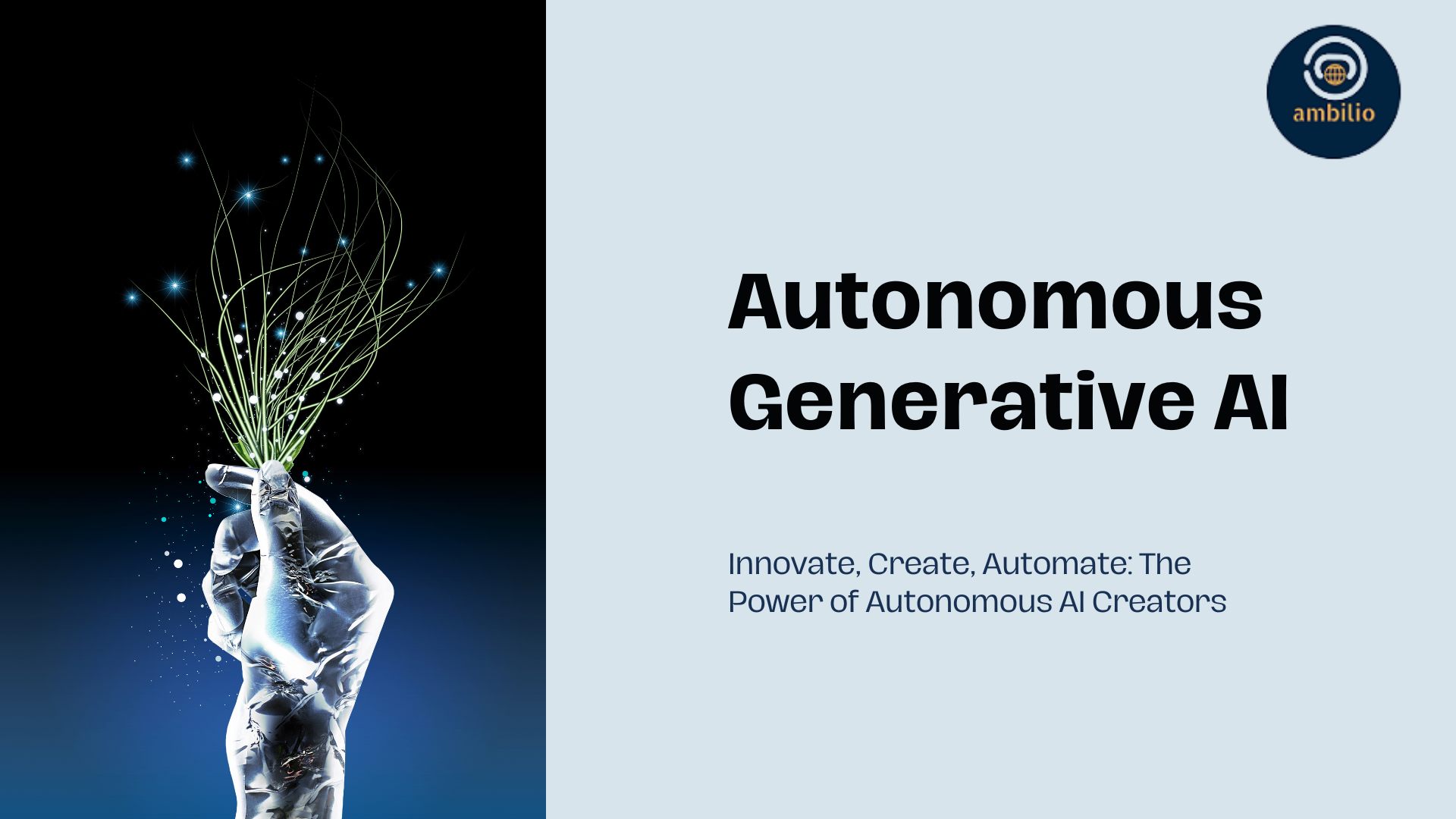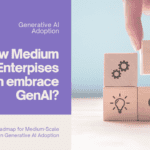The convergence of autonomous AI agents and advanced generative models has birthed a transformative frontier—Autonomous Generative AI. This cutting-edge amalgamation empowers AI-driven agents to independently create content aligned with specific objectives, revolutionizing industries across the spectrum.
By merging autonomous agents and sophisticated generative models, this innovation enables the autonomous creation of purpose-driven content, promising a paradigm shift in diverse industries. Autonomous Generative AI represents a milestone where AI agents autonomously generate content according to predefined goals, reshaping how industries approach creative output and problem-solving.
Unveiling Autonomous Generative AI
Merging Autonomy and Creativity: Autonomous Generative AI epitomizes the synergy between autonomous AI agents (e.g., AgentGPT) and cutting-edge generative models (such as GPT-4). This amalgamation enables AI agents to autonomously generate outputs driven by learned patterns and user-defined objectives.
Technical Mechanics: Users input objectives, prompting AI agents to break them down into smaller, manageable tasks. These agents iteratively refine outputs, leveraging learned patterns and user-specified goals to create diverse and targeted content.
Operational Insights
Objective-Driven Autonomy: AI agents operate autonomously, executing tasks without constant human intervention. This independence streamlines the creative process, allowing agents to produce outputs aligned with specific user goals.
Adaptive Learning and Refinement: These AI agents evolve independently, continually refining outputs based on learned patterns and user-guided objectives. Feedback loops enable agents to adapt and enhance their generative processes over time, ensuring continual improvement.
Technical Intricacies
1. Architecture and Model Integration: The integration of autonomous agents with advanced generative models involves intricate architectural designs that facilitate seamless interaction and collaboration, ensuring efficient content generation.
2. Natural Language Processing and Understanding: Sophisticated NLP algorithms empower AI agents to comprehend user-defined objectives, breaking them down into actionable tasks and generating outputs in various formats.
3. Reinforcement Learning Frameworks: Utilizing reinforcement learning mechanisms, AI agents learn from interactions, continuously optimizing their generative processes to produce higher-quality outputs.
Top 5 Possible Use Cases
1. Dynamic Content Creation for Marketing: Autonomous Generative AI revolutionizes marketing strategies by generating dynamic, data-driven content for campaigns. It produces tailored ad copies, visuals, and videos, optimizing engagement and conversion rates across platforms.
2. Personalized Customer Interaction and Support: In customer service, AI-generated personalized responses and support materials enhance interaction. Chatbots powered by AGAI offer efficient and tailored responses, improving customer satisfaction and service efficiency.
3. Innovative Product Design and Prototyping: AI-driven design iterations and prototypes cater to evolving market demands. Autonomous Generative AI generates design concepts, aiding in rapid prototyping and ideation, accelerating product development cycles.
4. Data Analysis and Decision Support: AI agents assist in data analysis, uncovering insights and patterns crucial for strategic decision-making. They generate reports, forecasts, and analyses, supporting informed business strategies and future planning.
5. Tailored Financial and Investment Analysis: In the financial sector, Autonomous Generative AI aids in personalized investment analysis. It generates detailed financial reports, forecasts market trends, and recommends investment strategies tailored to individual portfolios.
Ethical Considerations and Control Measures
As AI-generated content gains traction, addressing ethical concerns becomes pivotal. Implementing robust control measures ensures responsible usage, mitigating potential misuse or the generation of inappropriate content.
The Path Ahead
Continual advancements in AI models promise an evolving landscape. Collaborative efforts between humans and AI agents pave the way for innovative solutions, transforming creativity and problem-solving across diverse domains, shaping a future where AI-driven innovation is at the forefront of change.
Conclusion
Autonomous Generative AI embodies a transformative era where autonomy and creativity converge, reshaping content creation, artistic expression, problem-solving, and education. Its potential to redefine industry landscapes and foster innovation heralds an unprecedented era of AI-driven creativity and progress.



